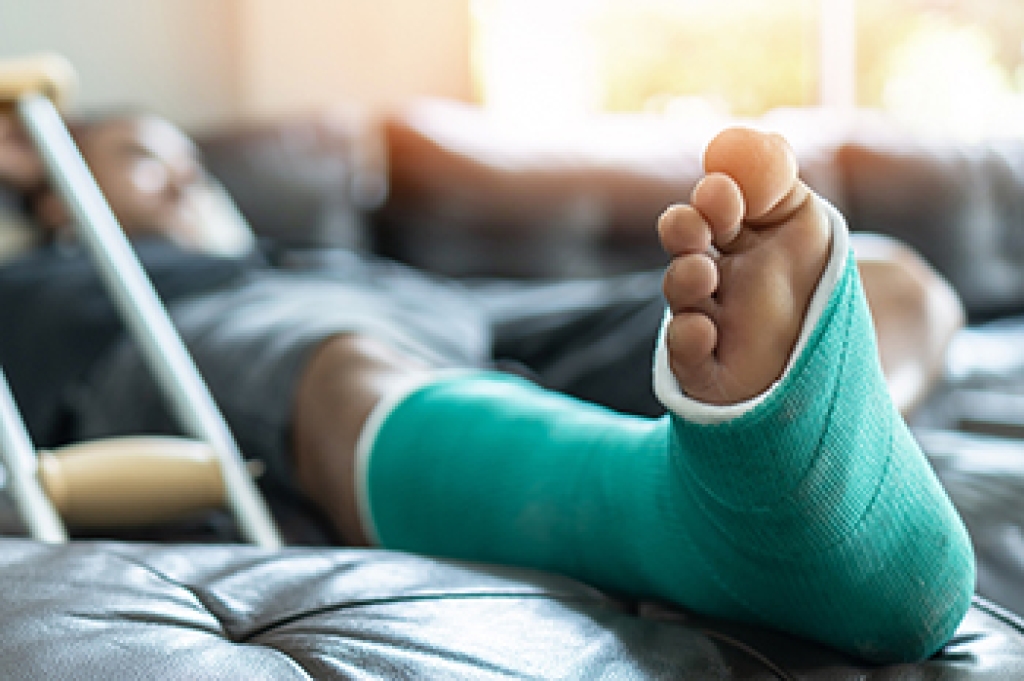 There are many foot and ankle injuries that a chiropodist can treat. These include injuries of the nerves, muscles, tendons, ligaments, bones, or joints in the feet and ankles. Plantar fasciitis, an inflammation of the ligament that runs along the bottom of the foot, is a common cause of heel pain. This condition can also lead to or be accompanied by heel spurs, calcium buildups on the ends of the heel bone that can irritate the plantar fascia ligament. Stress fractures, which are tiny breaks in the bones of the feet, are also common. Further up in the ankle and calf region, common injuries include Achilles tendonitis and ankle sprains. If you are experiencing any foot or ankle pain, please consult with a chiropodist.
There are many foot and ankle injuries that a chiropodist can treat. These include injuries of the nerves, muscles, tendons, ligaments, bones, or joints in the feet and ankles. Plantar fasciitis, an inflammation of the ligament that runs along the bottom of the foot, is a common cause of heel pain. This condition can also lead to or be accompanied by heel spurs, calcium buildups on the ends of the heel bone that can irritate the plantar fascia ligament. Stress fractures, which are tiny breaks in the bones of the feet, are also common. Further up in the ankle and calf region, common injuries include Achilles tendonitis and ankle sprains. If you are experiencing any foot or ankle pain, please consult with a chiropodist.
Trauma to the foot or ankle is one of the most common reasons that people visit a chiropodist. If you have a foot or ankle injury, please consult with one of our chiropodists from West Toronto Foot & Ankle Clinic Inc. . Our chiropodist can help you maintain the health of your lower limbs and your mobility.
Your feet contain 26 bones, 33 joints, and more than 100 tendons, muscles, and ligaments. Your ankles are large joints made up of three bones and various ligaments. All of these components work together to allow your lower limbs to move you throughout your life. Injuries to the feet and ankles can affect any one of these structures and can occur at any time. Some of the most common foot and ankle injuries include:
- Morton’s neuroma - Swelling of a nerve that runs between two toes, causes pain in the ball of the foot
- Stress fractures - Tiny cracks in one or more bones that can cause severe pain
- Plantar fasciitis - An inflammation of the ligament that runs along the bottom of the foot, causes stabbing heel pain
- Sesamoiditis - Causes pain in the sesamoid bones, located beneath the ball of the foot
- Achilles tendonitis - Inflammation of the tendon that connects the calf muscles to the heel bone, causes pain in the back of the calf
- Ankle sprain - Overstretching or tearing of one or more ligaments in the ankle, which causes ankle pain and can make it difficult to walk
Injuries to the feet and ankles often occur during athletic activities, such as running or playing a sport, or while wearing ill-fitting shoes. Other potential causes of injury include impacts from accidents, a sudden twisting while walking, or underlying biomechanical problems or medical conditions that affect the feet. Treatment for most of these injuries typically involves resting the feet and modifying activities and footwear to take pressure off of the affected foot.
All of these conditions, and many more, can be diagnosed and treated by a chiropodist. If you have any questions please feel free to contact our office located in Toronto, ON .

 Caring for our feet
Caring for our feet

